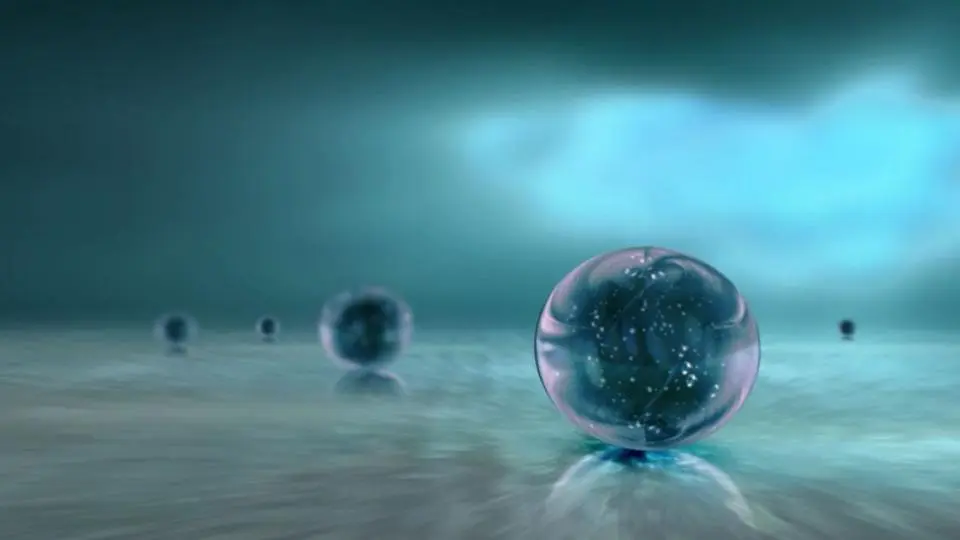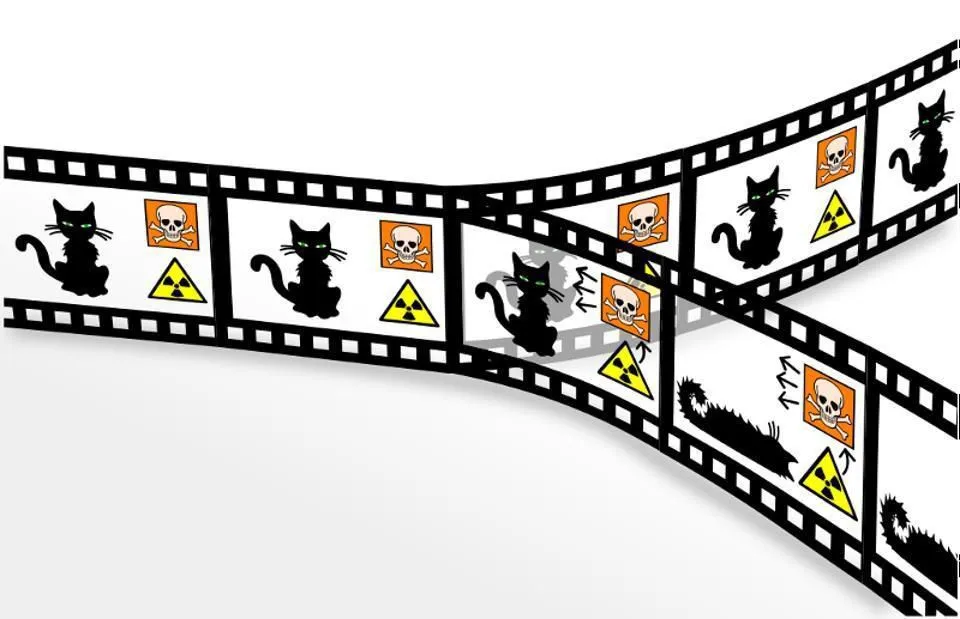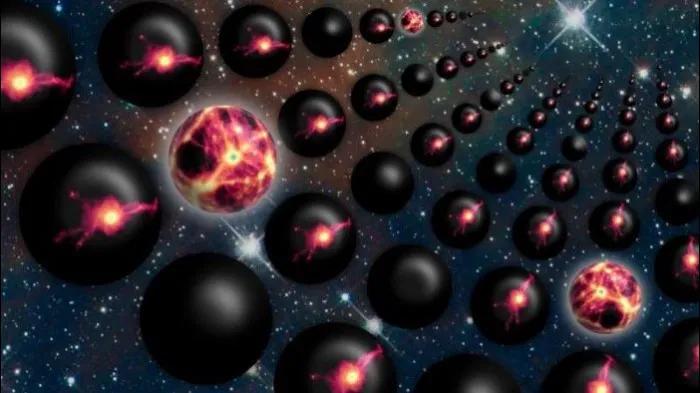Why Is the Concept of a Parallel Universe So Captivating?The idea of a parallel universe fascinates us for good reason. If other universes exist—where events unfold differently, where one key decision leads to another outcome—then perhaps there’s a way to access them. Maybe particles, or even people, could travel from one universe to another, allowing us to live in worlds that might be better in some ways than our own. These ideas exist not just in science fiction, but also in theoretical physics—from quantum mechanics with its infinite possibilities to concepts linked to the multiverse.
A NASA experiment conducted in Antarctica might reshape how we understand reality. Did NASA discover evidence of a parallel universe? Are you committed to the truth? Do you nurture a constant sense of curiosity?

But do these ideas have any connection to the observable, measurable universe? As early as 2018, there were claims that we had found evidence of a parallel universe from the Antarctic Impulsive Transient Antenna (ANITA) experiment. And indeed, ANITA detected signals that seemed hard to explain with conventional physics. Then, in 2025, the Pierre Auger Observatory followed up and reported a candidate event consistent with the ANITA anomalies. Yet it’s still far too early to claim that parallel universes are real.
From a physics perspective, the idea of parallel universes ignites our imagination and forces us to question their existence. At the same time, it’s a concept that remains extremely difficult to test. Parallel universes were first proposed through quantum physics, which is famous for its unpredictability—even when we fully understand how a system is set up. For example, when you fire an electron through a double slit, you can only know the probability of where it will land—not the exact spot.
One extraordinary idea—called the Many-Worlds Interpretation of quantum mechanics—suggests that all possible outcomes do occur, but each one happens in a separate universe. Explaining all possibilities requires an infinite number of parallel universes. This interpretation is just as valid as others. No experiment or observation to date has ruled it out.
A second source of the parallel universe concept comes from the multiverse theory. Our observable universe began with the hot Big Bang 13.8 billion years ago. But the Big Bang itself wasn’t the absolute beginning. Before it, there was a phase known as cosmic inflation, which set the conditions for the Big Bang. When inflation ended, the Big Bang began.
However, inflation didn’t stop everywhere at once. In places where inflation hasn’t ended, it continues—creating more space and more potential Big Bangs. Once inflation starts, it becomes nearly impossible to stop it everywhere. Over time, more independent Big Bangs happen, creating countless independent universes: a multiverse.
The biggest challenge with both ideas is that we have no way to directly test or constrain predictions about these parallel universes. After all, if we’re trapped in our own universe, how could we possibly enter another one? Our physical laws govern conserved quantities. Particles don’t just appear, disappear, or change—they only interact with other quanta of matter and energy in ways that follow physical laws. In all the experiments we’ve conducted, all the observations we’ve made, and all the measurements we’ve taken, we’ve never found any interaction that required something beyond our isolated universe to explain.
Still, based on various reports about the surprising ANITA findings, you may have read that scientists in Antarctica found evidence of a parallel universe. If that were true, it would be revolutionary. It would mean our current picture of the universe is incomplete—that there’s more out there than we ever imagined.
These other universes wouldn’t just exist—they could interact with our universe through matter and energy. If true, some of our wildest science fiction dreams might become reality. Maybe you could travel to a universe where:
– You chose the overseas job instead of staying in your home country.
– You stood up to the bully instead of being bullied.
– You kissed the person you let slip away in the night.
– A loved one survived a critical moment that went differently in this world.
So what is the extraordinary evidence for a parallel universe?
ANITA—the Antarctic Impulsive Transient Antenna—is a balloon-borne experiment designed to detect radio waves from below the Antarctic ice. That’s exactly what it was built for. Theoretically and practically, we can observe all kinds of cosmic particles traveling through space, including ghost-like neutrinos. Many neutrinos come from the Sun, stars, or the Big Bang, while others originate from high-energy astrophysical sources like pulsars, black holes, supernovae—or mysterious, unknown sources.
These neutrinos vary in energy, and the most energetic ones are both rare and intriguing. Neutrinos interact so weakly with matter that a typical astrophysical neutrino would need to pass through a light-year of lead to have a 50% chance of being blocked. That means they can come from virtually any direction. But most high-energy neutrinos we detect are produced by cosmic particles hitting our upper atmosphere, creating a cascade that ends in neutrino formation. Some of these can pass through Earth and interact in its crust, generating signals we can detect.
ANITA observed rare events consistent with neutrinos traveling through Earth at steep angles and producing radio waves. But the energy of these particles would have to be so high that they shouldn’t be able to pass through the Earth unimpeded. That raises a red flag, and we must ask some hard questions:
How many such events were observed?
Only three in total.
Did they have to pass through the Earth?
No. The first two might have been ordinary air-shower tau neutrinos, not ones that passed through the entire planet. The third may simply be background noise.
Did IceCube—another, much larger neutrino detector in Antarctica—confirm the events?
This is critical. A more sensitive experiment should detect even more compelling signals than ANITA. IceCube’s results are key: they effectively refute the idea that those neutrinos came through Earth. If high-energy tau neutrinos regularly passed through Earth, IceCube would certainly have seen them. But it didn’t.
So, scientifically speaking: ANITA detected unexplained radio signals. Their leading hypothesis was that these came from upward-traveling high-energy tau neutrinos. IceCube, however, found no such signal and no astrophysical source consistent with what ANITA observed.
So where does the parallel universe idea come in? Because for the ANITA anomaly, there are only three explanations:
- The particles have an astrophysical source.
- The detector or data interpretation was flawed.
- Something truly exotic and beyond the Standard Model occurred.
Some top scientists ruled out the first option, pointing toward the second as the most likely. What about the third? Well, if our universe can’t violate CPT symmetry, maybe the signal came from a CPT-reversed parallel universe. That’s a fun idea—but lacks serious evidence.
In fact, back in April 2020, physicist Ian Shoemaker proposed a simpler, more mundane explanation: ultra-high-energy cosmic rays might have reflected off the Antarctic surface or nearby ice layers, creating the illusion that particles had passed through the Earth. Intriguingly, this same explanation could also apply to the 2025 Pierre Auger candidate event. The same mechanism fits both anomalies.
Remember: in science, we must rule out all conventional explanations before turning to extraordinary claims. Over the past decade, many bold announcements have fallen apart under scrutiny. Neutrinos don’t travel faster than light. We haven’t discovered dark matter or sterile neutrinos. Cold fusion isn’t real. The “impossible” reactionless engine didn’t work.
This is an extraordinary story of good science. ANITA observed the unexpected and published its results. A more advanced experiment followed up and ruled out the primary hypothesis. A third study found only one anomalous event—consistent with the expected background from misidentified cosmic rays. This strongly suggests ANITA’s anomalies can be explained without invoking any new physics.
As always, more science helps clarify what’s really going on. For now, based on all the evidence we have, parallel universes remain a speculative dream—more at home in science fiction than scientific fact. And ANITA’s results must join the ranks of past experiments that once hinted at new physics but couldn’t be confirmed or reproduced by more sophisticated efforts.
Our Best Particle Physics Model May Be Leaking the Secrets of the Universe
It’s as if our best model of particle physics can no longer conceal the secrets of the universe—mysterious matter seems to be leaking out through the cracks. Now, with a series of strange events unfolding in Antarctica, the veil over those secrets is gradually being lifted.
Neutrinos are the weakest known particles in the universe. They are incredibly difficult to detect and have almost no mass. Neutrinos have always been streaming through our planet. The vast majority of them come from the Sun; only a minuscule fraction (if any) ever collides with protons, neutrons, or the electrons that make up our bodies and the dust beneath our feet.

But ultra-high-energy neutrinos from deep space are very different from their low-energy counterparts. They’re much rarer and have larger “cross-sections,” meaning they’re more likely to interact with other particles as they pass through matter. The odds of such a high-energy neutrino making it all the way through Earth without interacting are so low, it should practically never happen. That’s what made ANITA’s detection so shocking—like the instrument hit the cosmic lottery twice, and then IceCube won a few rounds just after it started playing.
Physicists know how many lottery tickets they’re dealing with. Many ultra-high-energy neutrinos originate from interactions between cosmic rays and the cosmic microwave background (CMB)—the faint afterglow of the Big Bang. Occasionally, these cosmic rays interact with the CMB just right, creating high-energy particles that reach Earth. This expected occurrence is known as the flux, and it’s supposed to be uniform across the sky. Both ANITA and IceCube have measured what the neutrino flux should look like at their respective detectors. But the universe simply isn’t producing enough high-energy neutrinos for either detector to reasonably expect to see a neutrino emerge from Earth.
Right now, many possible explanations could fit the limited data, including a fourth type of neutrino outside the Standard Model—an “inert” neutrino—or some hypothesized forms of dark matter. Any of these would be revolutionary. But for now, none of them has strong support. We must wait for the next generation of neutrino detectors.
Let’s return to the beginning of the video: Do parallel universes really exist? Some theoretical research has already begun, and for those unexplained measurement results, one particular explanation quickly made headlines across the globe: that these wandering neutrinos might somehow be evidence of a parallel universe. And not just any universe, but a CPT-symmetric universe—a mirror image of ours, said to run in the opposite direction of time since the Big Bang.
In this theoretical CPT-symmetric universe, it could exist without violating the laws of physics. Time would flow in reverse. Negative charges would become positive, and momentum would be flipped. In our reality, every particle would have a mirrored twin in that universe.
If true, this would amount to a world built on one of modern science’s greatest mysteries: antimatter. The idea is that the uncontrollable neutrinos ANITA detected may represent some kind of information leakage from that reality into ours. According to some theories, these particles might even be entirely new—a new class of particles for scientists to study and incorporate into our current understanding of how the universe works.
At this stage, a CPT-symmetric plane is merely a conceptual explanation for what’s happening in Antarctica—and a fragile one, according to some experts. Even in the event that a parallel universe does overlap with ours in Antarctica, it wouldn’t mean we could travel between them. That would be fundamentally impossible.
These intriguing particles are still subatomic, traveling at nearly the speed of light. So if it requires both subatomic scale and faster-than-light abilities to cross the gap between universes, then humans still have no hope of actually doing so. In theoretical scientific terms, this fleeting glimpse at what might be possible is like looking through a door that may forever remain locked. Even if we could cross over, survival in such a universe would be far from guaranteed.
For instance, if we imagine artificially creating antimatter on Earth—something theoretically possible—we already know how incredibly hard it is to maintain and store it under the precise conditions required. In a mirrored world, ordinary matter like the human body might be just as unstable and incompatible.
Before our forward-thinking brains can even begin to describe such an inverted reality, our thoughts are likely to split apart. At this stage, what we can say about neutrinos in Antarctica is this: they suggest something that violates the Standard Model may be occurring. Physicists have long suspected this, which is why alternative models such as CPT symmetry (and the broader idea of supersymmetry) have been developed.
But as exciting as the idea of a reversed parallel universe might be, ANITA’s findings also have more conventional explanations.
For example, in response to ANITA’s experiments, one group specifically studied the reflectivity of the Antarctic surface. Their findings suggest that the strange results may have been caused by the properties of the ice itself, rather than unknown particles. Antarctica is undoubtedly the most mysterious continent on Earth—it’s so cold that only scientists on short-term missions live there. And even so, the reported “gateway to a parallel universe” may eventually go down in history as nothing more than a trick of the light—an anticlimax.
The theory of a mirror-particle world beneath Antarctica remains labeled as highly implausible, at least until deeper studies can reveal the truth. But it’s a theory that won’t disappear anytime soon.

